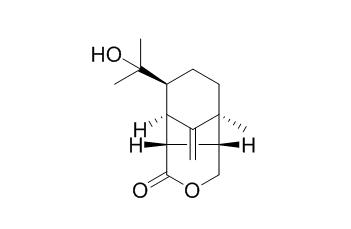Drechslerine D
Reference standards.
Inquire / Order:
manager@chemfaces.com
Technical Inquiries:
service@chemfaces.com
Tel:
+86-27-84237783
Fax:
+86-27-84254680
Address:
1 Building, No. 83, CheCheng Rd., Wuhan Economic and Technological Development Zone, Wuhan, Hubei 430056, PRC
Providing storage is as stated on the product vial and the vial is kept tightly sealed, the product can be stored for up to
24 months(2-8C).
Wherever possible, you should prepare and use solutions on the same day. However, if you need to make up stock solutions in advance, we recommend that you store the solution as aliquots in tightly sealed vials at -20C. Generally, these will be useable for up to two weeks. Before use, and prior to opening the vial we recommend that you allow your product to equilibrate to room temperature for at least 1 hour.
Need more advice on solubility, usage and handling? Please email to: service@chemfaces.com
The packaging of the product may have turned upside down during transportation, resulting in the natural compounds adhering to the neck or cap of the vial. take the vial out of its packaging and gently shake to let the compounds fall to the bottom of the vial. for liquid products, centrifuge at 200-500 RPM to gather the liquid at the bottom of the vial. try to avoid loss or contamination during handling.
Braz J Med Biol Res.2021, 54(12):e11183.
J Korean Med Ophthalmol Otolaryngol Dermatol2023, 36(1):21-39.
Proc Biol Sci.2024, 291(2015):20232578.
Phytomedicine.2019, 59:152785
Kor. J. Pharmacogn.2016, 47(1):62-72
Neuropharmacology2019, 151437
LWT-Food Sci Technol2020, 109163
Elife.2021, 10:e68058.
Jeju National University Graduate School2023, 24478
VNU J Sci: Med. Pharm. Sci.2024, 40(2):21-30.
Related and Featured Products
Journal of Saudi Chemical Society, 2013, 17(2):161-165.
Sesquiterpenes from the marine algicolous fungus Drechslera sp.[Reference:
WebLink]
METHODS AND RESULTS:
A marine fungal isolate, identified as Drechslera sp., was mass cultivated and found to produce a new naturally occurring seco-sativene type sesquiterpene helminthosporic acid (1) and three known sesquiterpenes, helminthosporol (2), drechslerine A (3) and (+) secolongifolene-diol (4). The structures of all compounds were determined by interpretation of their spectroscopic data 1D (1H and 13C), 2D (COSY, DQF, NOE, HSQC and HMBC) NMR, MS, UV and IR analyses.
CONCLUSIONS:
All compounds have been tested toward antioxidants, antimicrobial and antifouling effects.



